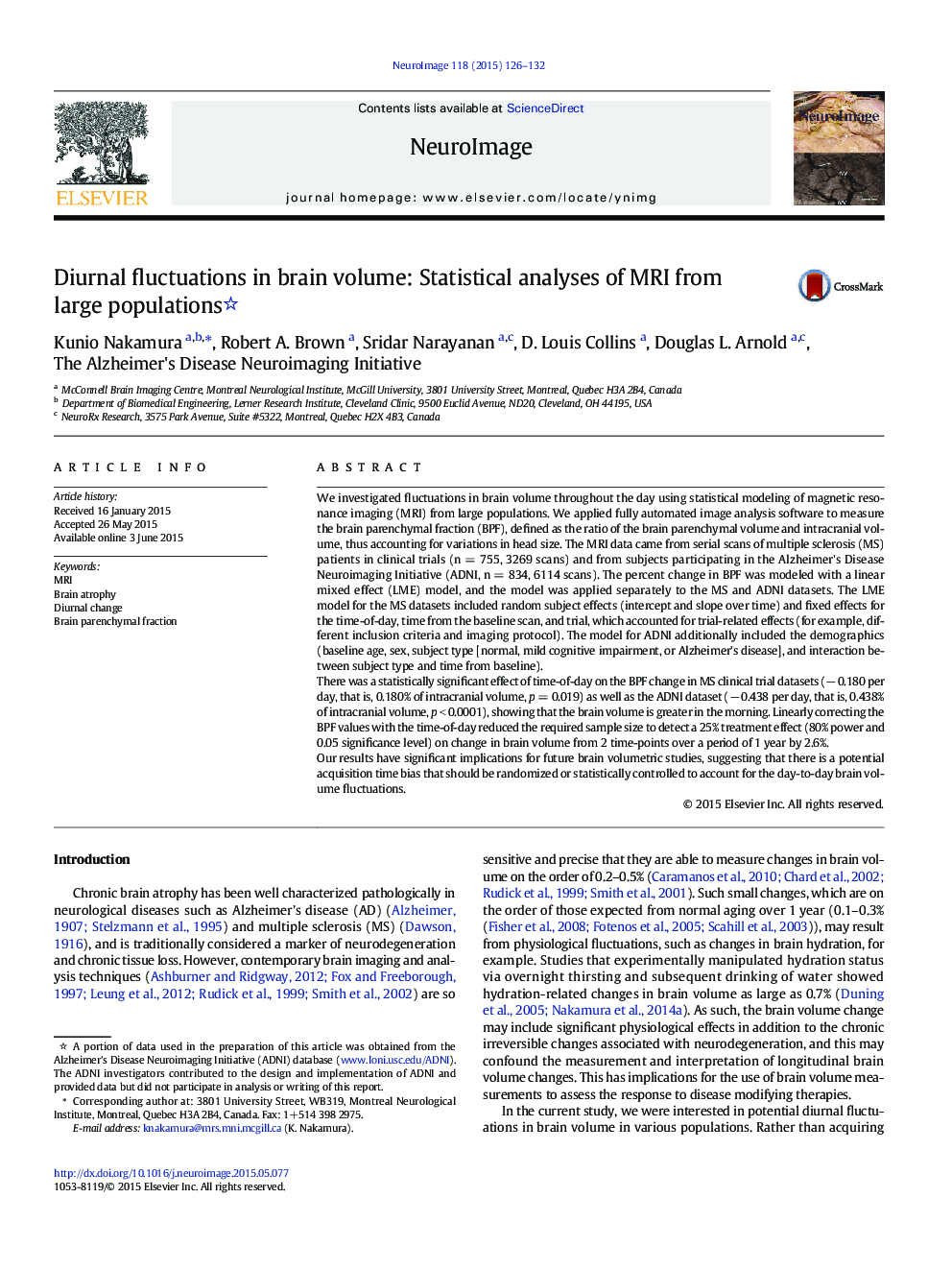| کد مقاله | کد نشریه | سال انتشار | مقاله انگلیسی | نسخه تمام متن |
|---|---|---|---|---|
| 6025093 | 1580889 | 2015 | 7 صفحه PDF | دانلود رایگان |

- We used large MS and ADNI datasets to investigate diurnal brain volume changes.
- There was a significant diurnal effect on brain volume changes.
- Brain volumes were larger in the morning.
- We recommend controlling for the acquisition time in future volumetric studies.
We investigated fluctuations in brain volume throughout the day using statistical modeling of magnetic resonance imaging (MRI) from large populations. We applied fully automated image analysis software to measure the brain parenchymal fraction (BPF), defined as the ratio of the brain parenchymal volume and intracranial volume, thus accounting for variations in head size. The MRI data came from serial scans of multiple sclerosis (MS) patients in clinical trials (n = 755, 3269 scans) and from subjects participating in the Alzheimer's Disease Neuroimaging Initiative (ADNI, n = 834, 6114 scans). The percent change in BPF was modeled with a linear mixed effect (LME) model, and the model was applied separately to the MS and ADNI datasets. The LME model for the MS datasets included random subject effects (intercept and slope over time) and fixed effects for the time-of-day, time from the baseline scan, and trial, which accounted for trial-related effects (for example, different inclusion criteria and imaging protocol). The model for ADNI additionally included the demographics (baseline age, sex, subject type [normal, mild cognitive impairment, or Alzheimer's disease], and interaction between subject type and time from baseline).There was a statistically significant effect of time-of-day on the BPF change in MS clinical trial datasets (â 0.180 per day, that is, 0.180% of intracranial volume, p = 0.019) as well as the ADNI dataset (â 0.438 per day, that is, 0.438% of intracranial volume, p < 0.0001), showing that the brain volume is greater in the morning. Linearly correcting the BPF values with the time-of-day reduced the required sample size to detect a 25% treatment effect (80% power and 0.05 significance level) on change in brain volume from 2 time-points over a period of 1 year by 2.6%.Our results have significant implications for future brain volumetric studies, suggesting that there is a potential acquisition time bias that should be randomized or statistically controlled to account for the day-to-day brain volume fluctuations.
Journal: NeuroImage - Volume 118, September 2015, Pages 126-132